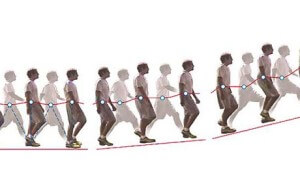
It Starts With Research
If the description of what a biomechanist does sounds theoretical, that’s because it’s basically a field within a larger field. People who become biomechanists generally study the wider field of kinesiology and then specialize in biomechanics at higher levels of their education. Since biomechanics focuses so much on research, a lot of the jobs that you will find in the field will be in research labs or other facilities run by colleges or companies that can utilize biomechanical research, such as companies that make sporting equipment.
Some Fields of Application
That’s not to say that there aren’t some jobs where biomechanists can apply their research to more practical applications. Sports and exercise science are two fields where such practical applications become readily apparent. The knowledge of how human beings move, and the application of that knowledge to produce solutions and products that will help them move more safely and effectively, is of great importance in sports and exercise. A biomechanist may be able to find work for companies that produce athletic shoes and equipment. Biomechanists have even been employed by individual professional athletes and athletic teams to provide analyses of how they can improve their sports performance, according to the Houston Chronicle.
Another practical field of application for biomechanics is ergonomics. Ergonomics studies the design of things so that they can be used more effectively. Biomechanists can help ergonomists and engineers find ways to lessen stress and injuries in the workplace. Just as an athlete will appreciate a scientifically designed shoe so he or she can run more efficiently, an office worker is going to appreciate an ergonomically designed desk chair that will lessen backache and help improve posture. In both cases, biomechanics can play a role.
Educational Preparation and Finding Jobs
A strong background in math and science will help you as you pursue studies in kinesiology and the sub-specialty of biomechanics. Biomechanists need to have a good understanding of physics and human anatomy. A master’s level degree that specializes in biomechanics will probably qualify you for lab technician and junior research jobs, while senior researchers almost always have a doctorate, according to the American Kinesiology Association. The American Society of Biomechanics lists various graduate programs on their website. There is a broader based International Society of Biomechanics which also provides helpful resources about the field, including mentors for students who join. There is also an International Society of Biomechanics in Sports.
Related Resource: Sports Nutritionist
While biomechanics probably does not leap to your mind when you first consider science careers, it’s an interesting and growing field. It is also a field that has the potential to make a difference in the health and safety of ordinary people. Movement may seem like a common thing to study, but what a biomechanist does is help assure that movement is as safe and effective as possible, whether a person is competing in a marathon or working at a desk job.
Related Resources: